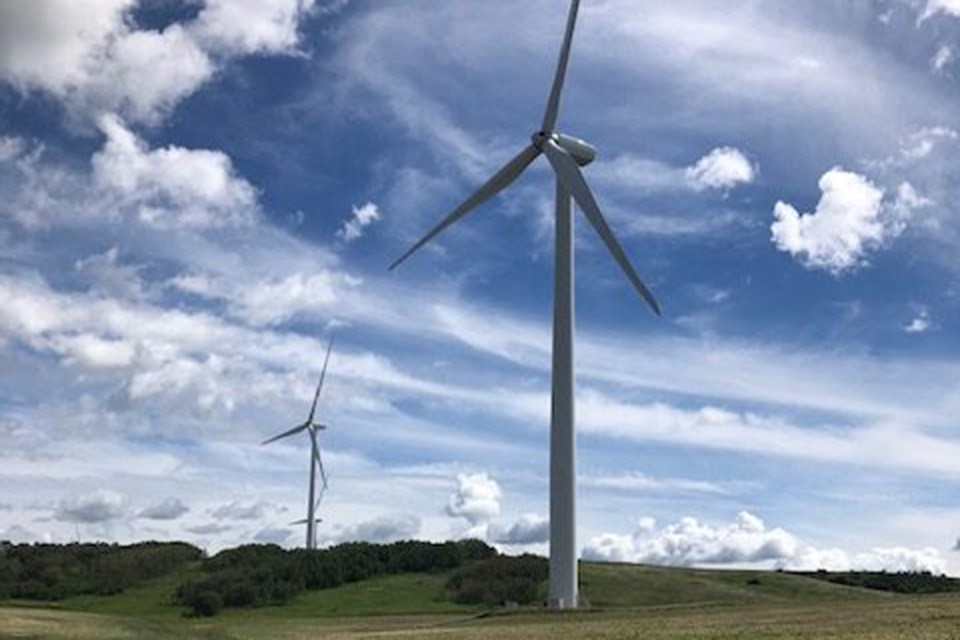Women are still under-represented in the traditional energy industry in Alberta and there are fears the gender equity gap may be replicated in the renewable energy sector.
March 8 is International Women’s Day and the theme DigitAll: Inovation and Technology for gender equality is meant to bring focus to the underrepresentation of women in STEM (science, technology, engineering and mathematics) education and careers in digital technology, but women also lack representation in other STEM careers such as the traditional and renewable energy sectors as well.
Kendall Anderson, Manager of the Pembina Institute’s Energy Transition program said there currently isn’t a lot of data to go by but recent numbers out of the United States show there are fewer women in the solar and wind industry than there are in nuclear, or oil and gas.
“Initially, what had been found throughout the world was that the renewable sector was more open and welcoming to women,” she said,
But, Anderson continued, because the renewable energy sector is still STEM focused and because there is “such a low number of women coming out of the schools with those educational backgrounds” they are not entering the field.
“All these new cleantech businesses are so reliant on science, technology, engineering, and math we need to really start even earlier and say, how can we make sure that women and girls are going into the universities and trades with that kind of end goal in mind because at the moment it's a very low representation of women and girls,” she said.
Data from the U.S. Energy and Employment Report released June 2022 showed both the solar and wind industry consisted of 70 per cent male employment in the U.S. The gas industry had a workforce consisting of 64 per cent males, whereas nuclear was 65 per cent male workforce, and coal was 68 per cent male employees.
But how do those numbers translate to the workforce in Alberta?
Although there isn’t much data for the renewable sector yet in Alberta, data from the Pembina Institute showed women make up 17 per cent of the workforce in mining, quarrying, and oil and gas, which contributes to income inequality in Canada.
“Women are really underrepresented in the energy sector and because the energy sector is so well paying the fact that there are very few women in the energy sector, what it results in is a gender pay gap and it really contributes to the overall Canadian gender pay gap,” Anderson said.
The oil and gas, mining, and quarrying sectors “were among the largest single drivers of inequality in Canada in 2018, contributing to 6.7 per cent of the wage gap,” a press statement from Pembina states.
In Alberta, woman make around 41 per cent less than men, according to a report from the Pembina Institute called Women in Alberta’s Energy Transition released in 2021.
“Women that do work in energy, tend to be in roles that are less high paying, so they might be in HR or finance, and not necessarily in engineering or in some of the trades that are more high paying. And that begins from childhood where there's sort of gender bias that leads women to certain kinds of roles,” she said.
“Then as a consequence, the roles that are sort of seen as women's roles are undervalued in our society, and therefore paid less,” Anderson continued
Anderson said there are a number of barriers that prevent women from entering into the energy industry, from socialization that leads women to not seek out energy jobs to the “significant gender bias when it comes to the hiring process.”
If a woman does enter into the industry, she can face other barriers such as safety because of the lack of women in the sector.
“We've had one woman say to us, ‘When I started the role of HR pulled me aside and said, be careful. Don't be alone. Don't drink’ —like those kinds of things. Rather than addressing the root cause, which is the men's behavior, the HRs function was to warn this woman to watch herself and to guard herself. It's not a very welcoming position to be in,” she said.
The other issue is that women are still doing most of the caregiving when it comes to children and that makes it hard to support a job especially if the job has long hours or is in a remote location.
Anderson said there are solutions including making sure there are training opportunities for women in the industry, supporting women in leadership roles, and then addressing why women leave the industry.
“Organizations need to really collect that data and and ask themselves those tough questions: How can we how can we make sure that we're continuing to expand our workforce? We're really seeing that as an issue now,” she said.
Anderson said we need to be deliberate about planning and federal initiatives like the interim Sustainable Jobs Plan released in Febraury need to address not only reducing climate impact, but also increase equity.
Inclusion, diversity and equity are really key drivers for employee retention, she added.
“The world is at a moment of change when it comes to climate action, and we're seeing, in the United States and in Europe, an effort to diversify our energy sources to ones that are lower carbon. This change offers a unique opportunity to address some of the historic wrongs that have happened. And I think that there's no time like the present to do so,” Anderson said.




